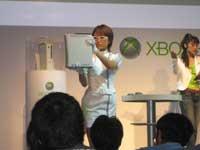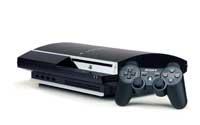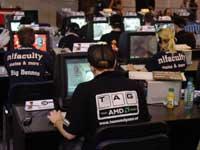Scientists spying on video consoles

In 2008, 29 million video consoles and 200 million video games were sold in Europe. The video game market mobilized about 15 billion euros. These data are collected by ADESE (Spanish Association of Distributors and Publishers of Software for Leisure) in its annual report. Users are looking forward to the latest news. But, in addition to users, the scientific community keeps an eye on new video consoles and applications. It's not just toys, they're amazing results of intense research and development, they surprise scientists and see how to take advantage of them.
Researchers at Warwick University in the UK are delighted with their new Xbox 360 console. They have not bought it to play Halo at coffee time, but to work. They use the Xbox 360 graphics processing unit (GPU) to process research data. To date computer networks were commonly used to perform such operations, but with this unit they have greatly accelerated the process.
In fact, the silicon chip of the Xbox processes in a cheap and parallel way, being as effective and economical as the traditional system. At the University of Warwick they have decided to take advantage of this capacity in their research and thus have managed, for example, to develop a model that explains how the electrical signal moves around damaged heart cells.

It's not the first time consoles and real life intersect: The world's fastest commercial computer, IBM Roadrunner, uses a processor based on PlayStation 3 processing technology. Performs three trillion operations per second. To do this, it uses 12,240 chips that use PS3 and 278 servers that connect 6,562 dual servers.
Experts don't think it's chance. According to Ibon Aizpurua, Eleka's computer engineer, "video games and their environment are often not considered serious issues. But keep in mind that it is a very competitive market, so any factor acquires a great importance. A clear example of this is the prices of video consoles, which with the best features are squeezed to the final cent", so video consoles have become machines with great processing capacity. "Aware of this, leveraging these chips for your research is connecting synergies between two worlds. This allows them to build powerful parallel processing machines at a much lower price."
NASA looks at Google
In addition to video consoles, there is another application that we use for leisure and that has attracted the attention of scientists: Created by Keyhole and big Google

bought Google Earth. Google Earth is a computer program that shows the planet in three dimensions. It makes the user feel astronaut without moving from home, as it allows to show from space the ball of the world and approach everything he wants. This combines satellite images, maps and the Google search engine. Recently, an application that shows the level of carbon dioxide won the application contest organized by Google Earth to show scientific results. It shows the level of CO2 in the different layers of the atmosphere. In addition to winning the contest and joining Google Earth, the Michigan Technology and Research Institute has received hot applause from NASA. NASA itself offers a report on its website: "The Google Earth app has mapped the carbon path." It aims to train users and scientists in the search for carbon dioxide emissions. To begin with, he has conquered NASA.
Published in Ortzadar
Buletina
Bidali zure helbide elektronikoa eta jaso asteroko buletina zure sarrera-ontzian











